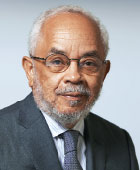Peace Cranes in a Sanctuary

Whenever I am away from home on Sunday, I find it rejuvenating to attend a church service as a visitor. I enjoy observing the rituals and listening to a new preacher. I take note of the level of the music ministry and the lay members’ participation in their faith group. Most recently, I took the one-mile stroll from my lodging to St. John’s Scottish Episcopal Church in downtown Edinburgh. I decided to visit this branch of Protestantism because I had already attended a service at a Church of Scotland, with its philosophy and rituals closer to those of John Knox and the Calvinist Reformers. One glance at the day’s service program and my eyes landed on the claim that St. John’s “seeks to be an open community, walking in the way of Jesus, engaging with an ever-changing world, and living a faith that is timeless yet contemporary, thoughtful, and compassionate.” This declaration of modernity was in striking contrast with the greying mass of stone that characterized the external appearance of the building. The seeming contradiction would come up in my conversation after the service with the associate rector, the Rev. Rosie Addis.
Everyone followed the public health rules and wore a mask. The choristers took off theirs while fulfilling their duties, as did the clergy when leading the prayers, preaching, and reading the liturgical texts. Clergy and congregation had found an operational middle ground, a way of functioning while wearing masks and respecting distance. No collection plate was circulated during the service. A member explained that the new method, forced by COVID-19, was for someone to stand at the church door after the service, with the collection plate in hand. I learned that the new method is called “retiral collection.”

A mobile of cranes floats above the sanctuary in St. John’s Scottish Episcopal Church in Edinburgh.
It is hard to explain the Sunday morning peacefulness of an urban church, built almost 200 years ago. With the organ in the hands of an aficionado and the choir chanting the psalm expertly, the 16th-century motet by William Byrd was performed elegantly. The sacred sounds were bouncing lightly off the church walls accompanied by the sun’s rays dancing on the mobiles hanging from the ceiling and light fixtures around the church. The photograph shows an example of the extensive mobile made of thousands of peace cranes handcrafted from origami paper. I learned the cranes were part of an exhibition by artist Janis Hart intended to transform St. John’s Church into a bird sanctuary for peace. The idea was to provoke viewers into thoughts about the victims of the 1945 bombing of Hiroshima. That is complemented by the church’s work for inclusion of LGBTQ people in the life of the church and in society.
The Rev. Addis explained the mission of this urban faith group, first by helping me understand better the morning’s sermon. It was about EFM, which stands for “Education for Ministry” or “Exploring Faith Ministry.” She pointed out that this movement is not intended for the education of clergy. It is to help church members explore religious matters and facilitate their theological reflection about what God is asking them to do in service to others. Hence, the mission’s orientation toward peace, abolition of nuclear weapons, and fellowship with nondominant groups such as Blacks, other minorities, and the LGBTQ community. Rev. Addis has also determined her pathway toward serving a unique group. She is an expert in British Sign Language and directs a monthly service for what she calls the “Messy Church.” This meeting is for those suffering the indignities and problems related to hearing disabilities.
Several elements in the service collectively framed an ambience of togetherness and concern for others. The play area to one side of the sanctuary welcomed children. The tables and chairs at the rear invited attendees to socialize and enjoy tea and cake at the conclusion of the service. These ideas about caring for others, or for one another, reinforced the aesthetic and moral impact of the multicolored paper cranes fluttering in the air currents above us. The reminder of what we should do for neighbors was powerful. ■



